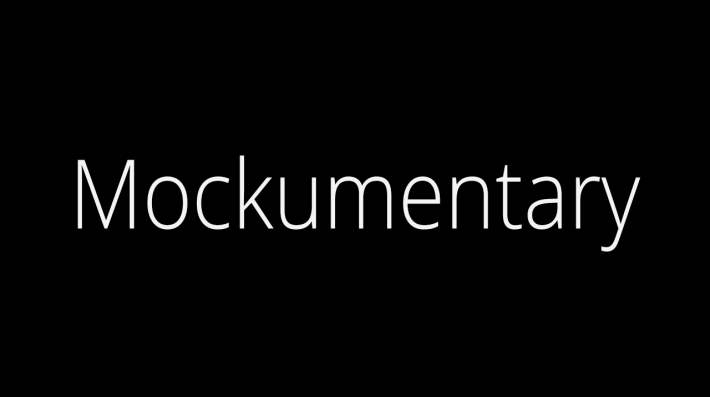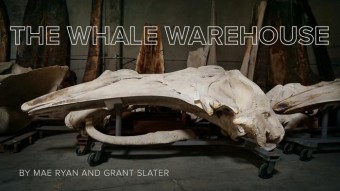Mockumentary – Guide to the Genres

| Category | Tutorials & Guides, Wiki |
| Tag | Fake Documentaries, Pseudo-Documentaries |
| Written by | Oliver Stangl |
| Published on | July 26, 2011 |
Summary:
Fake documentaries aka Mockumentaries & Pseudo-Documentaries. The documentary genre is as old as the history of the movies – the first images put to film weren’t exactly “art stuff” but [...]
Fake documentaries aka Mockumentaries & Pseudo-Documentaries.
The documentary genre is as old as the history of the movies – the first images put to film weren’t exactly “art stuff” but simply covered (documented) everyday events; the audience was impressed nonetheless. When seeing the Lumière Brothers’ film L’Arrivée d’un train en gare de la Ciotat (Arrival of a Train at La Ciotat), shot in 1895, the audience jumped up from their seats, fearing that the train might leave the screen and crash into the auditorium. Film is illusion, but an illusion that can be taken for real. In its early days, film was pure spectacle, nonetheless some filmmakers tried to make money by disguising pornographic material as “medical education films” (There were some serious filmmakers too, like the Romanian neurologist Gheorghe Marinescu who shot films like The walking troubles of organic hemiplegy from 1898). Several decades later, the documentary genre was regarded as serious – purely objective, just showing the truth. And, except for the “beautiful” images of nature documentaries not really regarded as “artistic”.
In recent years, however, certain documentaries are more and more regarded as art – and art can be quite subjective, can’t it? Michael Moore’s films (Bowling for Columbine, 2002; Fahrenheit 9/11, 2004) would be good examples; his films won several prizes, yet they were being received controversially and are not exactly regarded as “objective”. Certainly Moore’s films transcend the genre; actually they are a mix of documentary, essay, infotainment and polemics. There have been films before that which are hard to categorize; an early example would be Dziga Vertov’s The Man with a Movie Camera from 1929 that mixes feature film with documentary. Another example would be the work of Michael Glawogger: In Workingman’s Death (2005) for example, the filmmaker depicts work under extreme circumstances all around the world. The film doesn’t go into economical detail but tells its story through impressive tableaus.
In a way, fake docs can be seen as a comment on the serious and objective aura that went along with the documentary genre for many decades. As mentioned above, film is illusion, but one that can feel very real. Think of the audience that was in terror because of the arrival of a train. So how about that theory: the documentary form can be used to create bigger illusions than feature films. And that’s where the mockumentary genre (as you might have guessed, the term mockumentary is a blend of “mock” and “documentary”) steps into place, taking advantage of that paradox. The filmmakers use the documentary form to create illusions that have kind of a real feeling to them. What you see has to be real – because it was put to film.
Or because it was on the radio. One of the early, but very effective fake examples was Orson Welles’ radio version of H.G. Wells’ The War of the Worlds from 1938. Welles staged the play about Martians attacking Earth like a reportage. The result was panic as many people took the play for real.
Mostly though, mockumentaries have a comical and satirical touch about them. An early cinematic example would be Woody Allen’s Take the Money and Run (1969) which covers the life of a thief to comic effect. In a conversation with critic Richard Schickel, Allen statet that “Take the Money and Run was an early pseudo-documentary. The idea of doing a documentary … was with me from the first day I started movies. I thought that was an ideal vehicle for doing comedy, because the documentary format was very serious, so you were immediately operating in an area where any little thing you did upset the seriousness and was thereby funny.“ Though with regards to content clearly recognizable as a comedy, Allen used hand cameras to capture the feel of direct cinema. The form of documentary also allows him to retell the life of his unlucky protagonist (played by Allen himself).
Somehow the music genre seems to be especially fruitful for mockumentaries: Richard Lester’s film A Hard Day’s Night (1964), with The Beatles in the leads, was a satirical film about the adventures of the famous band, while The Rutles: All You Need is Cash (1978), directed by Gary Weis and Monty Python’s Eric Idle was a parody on The Beatles. The Rutles features a reporter, played by Idle who has problems to stay in the frame, as the camera has a life of its own.
Trailer:
For many the best music mockumentary though, is Rob Reiner’s cult favorite This is Spinal Tap from 1984. The film follows a fictional British Band that started with Beat Music and later turned into Heavy Metal. Reiner gets the documentary feel right here, as much of the dialogue was improvised and not in the script. That “realistic” approach works very well; there are lots of little details like one of the musicians being trapped in a stage device because of a technical malfunction. Also the band’s drummers keep dying.
Trailer: This is Spinal Tap
Woody Allen returned to the mockumentary genre in with his masterpiece Zelig (1983). A movie as subtle as mockumentaries can get and maybe Allen’s best work from the 1980s. Zelig follows the life of Leonard Zelig, a man with the ability to transform into everyone he meets. He changes to an Afro-American in a Jazz Club as well as a snob when attending a fancy party. Allen’s film is a great take on the human desire to be liked and accepted and uses lots of fake newsreels to marvellous effect. There are many fake photos in the film, showing Zelig with famous people like Herbert Hoover or Al Capone. Allen also shot scenes of a film within a film, to show Hollywood’s fictional take on Zelig; the film also features interviews with celebrities like Susan Sontag or Saul Bellow who talk about Zelig as if he had been a real historical figure. (Allen returned to the technique of using interviews with “experts” in Sweet and Lowdown from 1999, a comedy about a jazz guitarist played by Sean Penn.)
Trailer:
There is practially no limit to the mockumentary genre; it ranges from political themes (Bob Roberts from 1992, directed by and starring Tim Robbins, who portrays a right wing politician and folk musician) to cultural satire (Borat: Cultural Learnings of America for Make Benefit Glorious Nation of Kazakhstan from 2006, directed by Larry Charles is about a Kazakh journalist who travels the US) and even animation (Surf’s Up from 2007, directed by Ash Brannon and Chris Buck, for example, follows the adventures of a surfing penguin).
It can also work the other way around: Director Robert Altman (MASH, 1970; Nashville, 1975; Short Cuts, 1993) used documentary style, zoom effects, overlapping dialogue and a naturalistic acting cast to lend his films more credibility.
There is also a lot of reflexivity and criticism on the documentary genre to be found in mockumentaries: The Belgian film C’est arrivé près de chez vous (Man Bites Dog, 1992) is about a reality televison team that follows a serial killer and eventually teams up with him. The film is a satirical take on how „real“ (or manufactured) reality TV actually is and how far TV stations would go to make money.
The Austrian documentary Das Fest des Huhnes (The Feast of the Chicken) from the same year is a satire on ethnological documentaries as it follows an African TV team that studies the behaviour of Austrian natives.
Mockumentaries (which in many cases don’t acquire a lot of budget for props) can also be highly profitable: The Blair Witch Project (1999), a horror film about three film students who become victims of a witch and leave video footage behind, was realized for a relatively small budget but made a world wide gross of roughly 250 million dollars. Most of the films budget was spent on a brillant marketing campaign that had people believe the case of the missing film students was real. Critics also liked the film, Roger Ebert even called it “an extraordinarily effective horror film.”
 Last year, Banksy – Exit through the Gift Shop was a huge success with critics and received an Oscar nomination. The film starts as a documentary about famous street artist Banksy but suddenly turns into a Banksy-directed film about the filmmaker Thierry Guetta – who doesn’t exist. (For this film, many critics didn’t use the term mockumentary but „prankumentary“.)
Last year, Banksy – Exit through the Gift Shop was a huge success with critics and received an Oscar nomination. The film starts as a documentary about famous street artist Banksy but suddenly turns into a Banksy-directed film about the filmmaker Thierry Guetta – who doesn’t exist. (For this film, many critics didn’t use the term mockumentary but „prankumentary“.)
Mockumentaries, if done right, play demanding and complex tricks on the viewer; they can also be plain fun or quite scary – and they can also remind the viewer that “serious” documentaries are not 100% objective either. So, if you watch a documentary next time, make sure it is not a fake.
Conclusion: A mockumentary, with its “realistic” approach, can be many things – a satire on a certain topic, a critical reflexion on the documentary genre or even an effetive horror film. Basically, a mockumentary can cover the same subjects as a regular documentary: life.












Comments